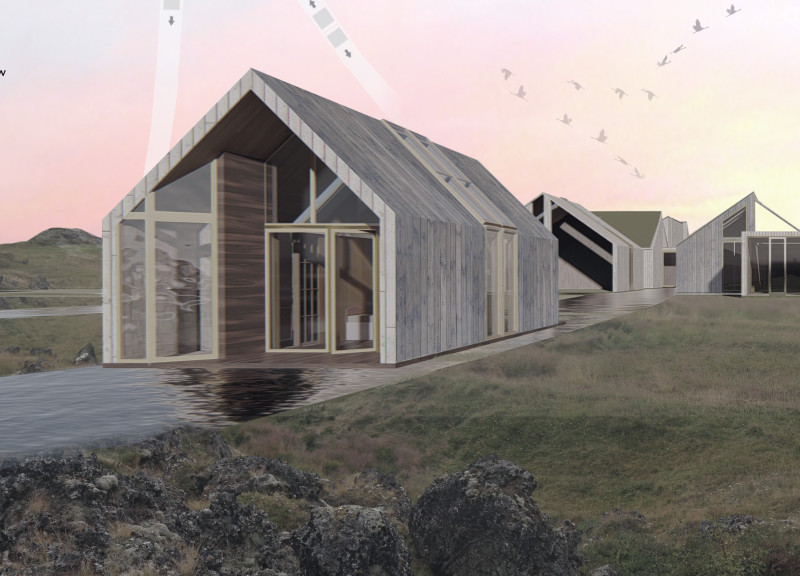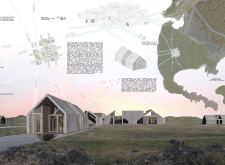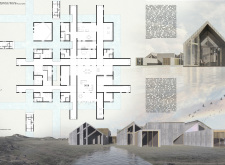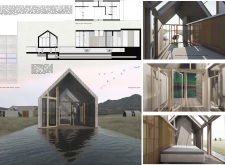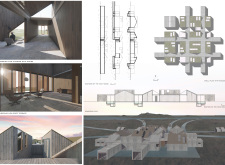5 key facts about this project
Functionally, each floating house is conceived to offer residents a unique blend of private living space and access to communal resources. The layout is organized around water features, emphasizing the relationship between the homes and their aquatic surroundings. This arrangement fosters social interactions while allowing each dwelling to maintain a sense of individuality and privacy. The floating nature of the houses allows them to adapt to varying water levels, ensuring stability and reducing the impact on the local ecosystem. This dynamic response to changing environmental conditions highlights a forward-thinking approach to architecture, where resilience is integrated into the design from the outset.
A key aspect of this project is its careful consideration of materials. The use of wood as the primary construction element accentuates local craftsmanship while promoting sustainability. Wood not only provides structural support but also establishes a warm and inviting atmosphere both inside and outside the homes. Large expanses of glass are incorporated throughout, enhancing natural light and creating a seamless connection between interior spaces and the natural environment. These materials are complemented by the use of concrete in foundational elements, ensuring durability and support for the floating platforms. The project champions recyclable materials, reflecting a dedication to minimizing its ecological footprint.
The architectural design features unique rooflines characterized by asymmetry and triangular profiles. This architectural choice contributes to both functionality—by facilitating rainwater collection—and aesthetic diversity across the housing complex. Interior spaces prioritize a modern open-plan layout, allowing residents to customize their living arrangements while promoting fluidity and space efficiency. The design focuses on incorporating natural finishes and textures, further enhancing the residents' experience through a calming ambiance.
One of the standout elements of this architectural endeavor is its emphasis on community. Rather than merely building individual homes, the project promotes social interaction through shared spaces and communal areas, reinforcing the importance of community engagement within residential architecture. The incorporation of educational elements about sustainable practices encourages residents to connect with their surroundings and adopt a lifestyle that aligns with environmental values.
This floating housing project signals a departure from traditional approaches to home design, integrating ecological awareness with modern living. By harnessing local resources and drawing inspiration from the surrounding landscape, the project sets a precedent for future developments in sensitive environments. Viewers are encouraged to explore the architectural plans, sections, and designs that reveal the thoughtful considerations underpinning this project. Delving deeper into the architectural ideas behind the floating houses will provide valuable insights into how thoughtful design can coexist with natural ecosystems, making it a relevant example in today’s architectural discourse.


